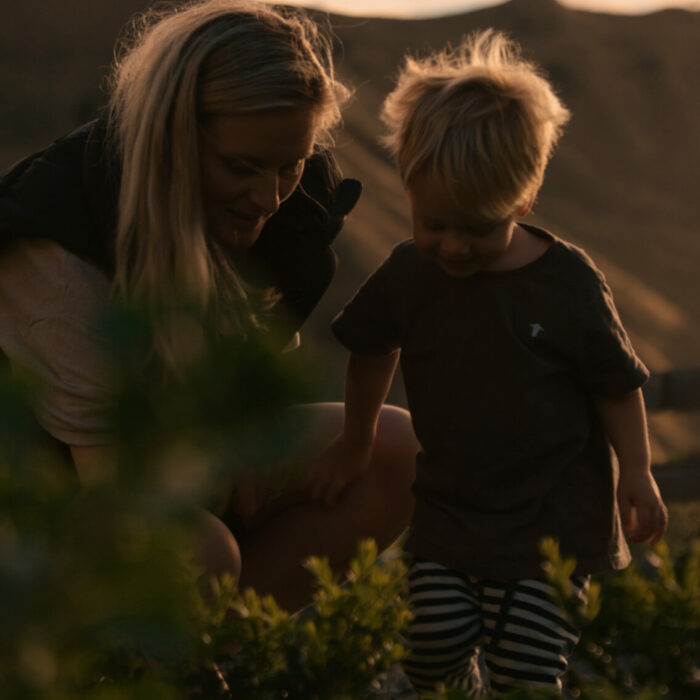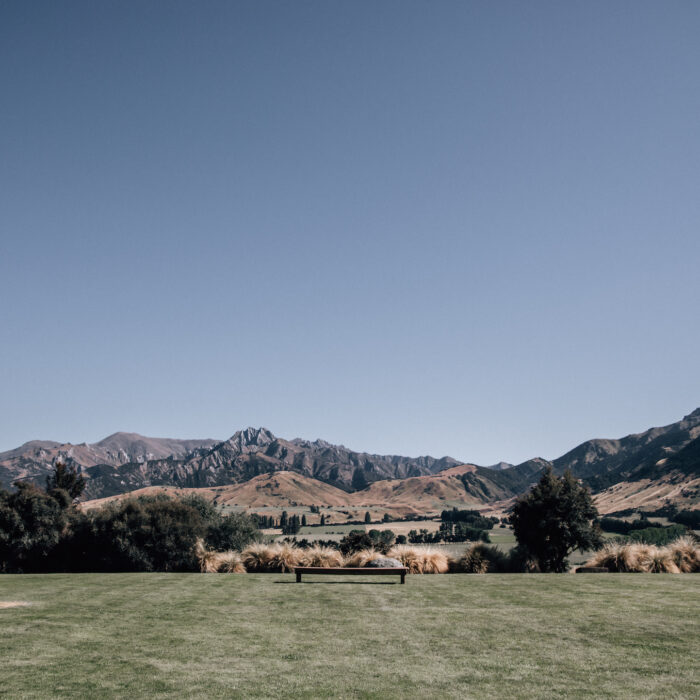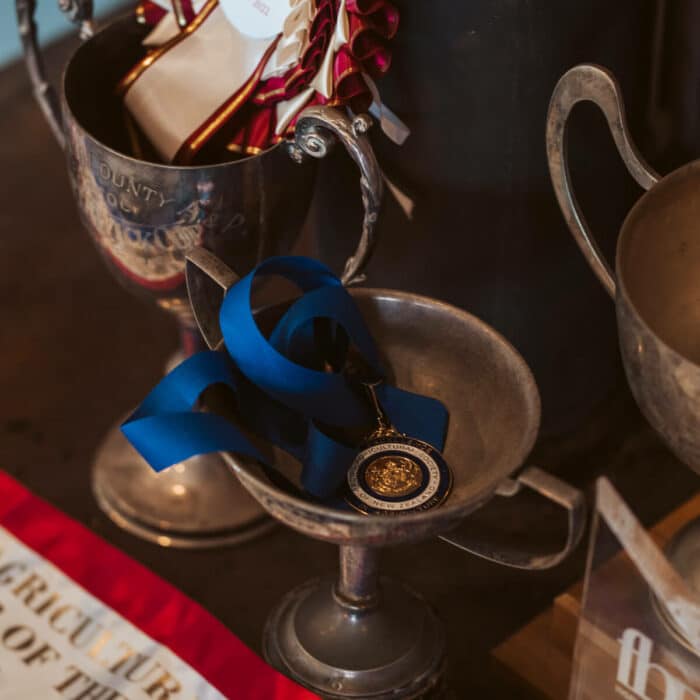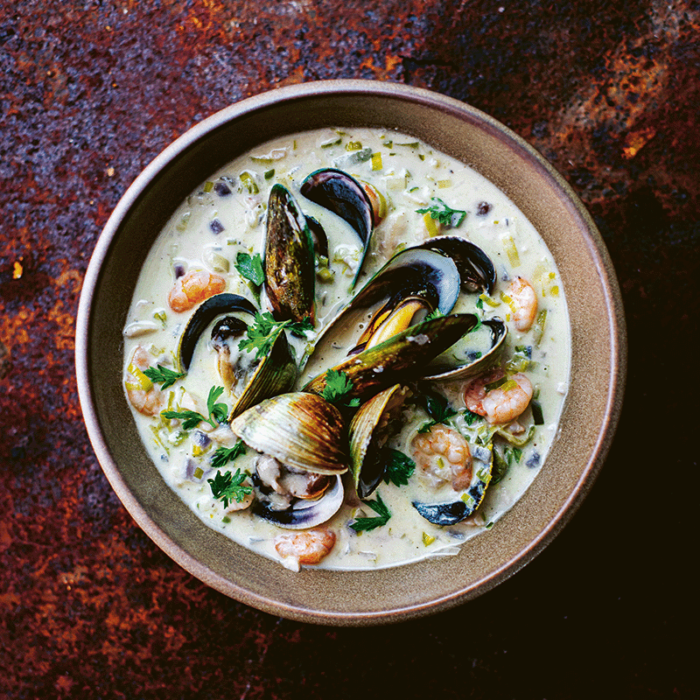05 January 2024
A Movement in the Māra
Toitū Te Whenua, Toiora Te Wai. Our Land and Water.
writer: ARPÉGE TARATOA (NGĀI TE RANGI, NGĀTI RAUKAWA, NGĀ PUHI, NGĀTI RĀRUA)
photographer: MICHELLE PORTER
Bry Kopu, 51, and Te Raumahora Hema, 39, find synergy in their love for te taiao, and for their tūrangawaewae – Ngāmotu New Plymouth. Together, Bry (Te Ātiawa, Ngāti Mutunga) and Te Raumahora (Te Ātiawa, Ngāti Tama, Taranaki Tuturu, Ngāti Raukawa, Ngāti Maniapoto, Ngā Puhi) are working on Te Kāhui Rau, a movement shaped by dedication to research, revitalisation and regeneration of te taiao.

“There’s nothing like what happens when you’re in the māra together. There’s wānanga, generational connection – seeing the kids getting excited when they find a big kūmara,” Te Raumahora says. “You seem them come home from a whole day of harvesting, full of energy – they’re just on a high.” Above. Bry says, “I’ve had a couple of iterations of career changes, but always connected to looking at ways that we can transform our community and transform social, cultural, environmental and economic outcomes. Having worked in an office most of my life, it’s really important for me to recharge – there’s so much research around about having your feet on the grass, in the soil every day, breathing in fresh air and having the sun on our faces. This mahi has really encouraged me to get back to that because we can get so caught up in our busy lives.”
Te Raumahora (Kairangahau Mātauranga Māori): I whānaunau ai ahau ki konei, engari I tipu ake au mo te maha o tōku oranga i Ahitireiria; engari I noho ana au ki runga I tōku tūrangawaewae mo ngā tau tekau mā toru inaeanei. I was born here, however for most of my childhood I grew up in Australia. My husband, Taiao, and I, and our four tamariki – Kitemoana, 18, Te Ariki, 14, Te Wakatoa, 10, and Ewhaiana, 5 – have resided in our place of belonging for about thirteen years. I was an indigenous youth-worker over in Australia before I came home. I’ve been in public health, suicide prevention, mental health and addictions, mainly.
I was tapped on the shoulder to come and be a part of this kaupapa. I’d just quit my job at Taranaki Retreat in Suicide Prevention to study, because it was becoming quite a bit over Covid – you could imagine our people were struggling beforehand, so post-Covid it was quite full on. I’m honoured to be able to be a part of this project because it aligns with my passions and being closer to our hapū – I love our people, and I love our whenua. I have a deep love and passion for rongoā Māori, and this has been one of my safe spaces for several years now, having studied with Pā Ropata McGowan and Donna Kerridge. I feel these taonga really assist me in my role in this kaupapa. One of my current projects is researching and interviewing some of our uri to gain a deeper understanding of their connection to this special place, our tūrangawaewae, here on this side of the Waiwhakaiho awa. It is also very important that we gauge our wider hapū whānau aspirations for their whenua and taiao.

Te Raumahora cradling several kawakawa leaves. Te Kāhui Rau approaches te taiao holistically, beyond the surface concept of natural environment.
I’ve also been absolutely nerding out on the GIS mapping we are working with. It’s a way for our people to see ourselves within a landscape because lots of our whenua is in private ownership. There’s something really empowering about decolonising our maps and seeing ourselves within them. We’re able to have access to our whenua, our archaeological sites, our wāhi tapu and collect this amazing data. It’s a great tool to assist with whenua planning activities like the reestablishment of our mahinga kai, riparian native planting and protecting and caring for our sacred sites of significance. Individuals with accessibility issues can view their whenua in a whole different way. With the click of a button, you can remove all the infrastructure, and view what’s beneath it. I’ve only scratched the surface of this cool technology, but there are new innovative ways of building narrative and taking whānau on a journey of rediscovery throughout their whenua.
Being urban hapū we have our own set of challenges, and taiao is at the centre of it. Our landscape looks completely different from our rural hapū; they’ve got full working marae and sometimes quite a bit of whenua and native ngāhere – whereas here in town, our landscape is changing all the time; it’s being built up. We’ve been dealing with a lot of challenges post-Treaty settlement – the mamae, the generational trauma, it really runs deep. A lot of our whenua here, we’re disconnected from it because it’s not in our ownership and now it looks like a massive city. For me, it’s painful to see that there’s less than ten per cent of native trees in our urban areas and the health of our awa and manga are in terrible condition – you can see the harm that’s been done to our whenua and, looking back over time, you can observe how drastically our landscapes have changed.
The revitalisation of mātauranga Māori to help improve our wellbeing is my passion – all of those knowledge systems that have been lost to us. It’s a discipline of the sciences in essence, connecting people back and reconciling that relationship with their whenua and their natural environment is critical in improving the health of Papatūānuku.
“Even though I’m a really old-school person – I love the smell of books and going to the library – I’m understanding that technology can really change the way in which we revitalise our mātauranga and reconnect our people through it,” Te Raumahora says. “When everyone has enough, success to me is rebalancing our whenua so she’s well, we’re well and we have enough…sometimes more than enough, maybe even thriving instead of just surviving.”
Bry (Project Manager): I live in New Plymouth and have two children – Nikau, 14, and Jemimah, 3. Te Kāhui Rau is not really a project with a specific start and end date. Instead, it represents a kaupapa with an enduring responsibility that we – as mana whenua and kaitiaki of taiao – carry on behalf of future generations.
The research component of Te Kāhui Rau enables us to define what our aspirations and challenges are in revitalising te taiao, and how mātauranga Māori, the sciences and practical skills of the people who have been working on the whenua, can shape an appropriate pathway forward for us. It is an exciting challenge to pull all of that together and create a living document that will inform decision making for the future.
As a community, this kaupapa has never been more important as we face an uncertain future impacted by local and global events, and the consequences of climate change. Since 2020, we have collectively experienced Covid-19 and extreme weather events that disrupted our transportation infrastructure and food-supply chains. These challenges are not likely to go away, nor are they unique to Taranaki as they are shared by communities across Aotearoa. We hope through Te Kāhui Rau to shape a Taranaki response that aims to future-proof ourselves but also articulate a regional resilience strategy, ensuring that taiao thrives even in the face of uncertainty.
My business partner, Glen, has been actively revitalising our māra, Te Moeone, at Katere ki te Moana Marae for over a decade. Under Te Kāhui Rau, the focus extends beyond simply growing kai; we are testing a healing framework, He Kawa Ora, that reinforces a nurturing environment incorporating tikanga, whanaungatanga, te reo and whakapapa – all essential elements of resilience. By encouraging community involvement in our garden, we aim to cultivate not only food but also an inclusive healing framework for all participants, Māori and non-Māori.
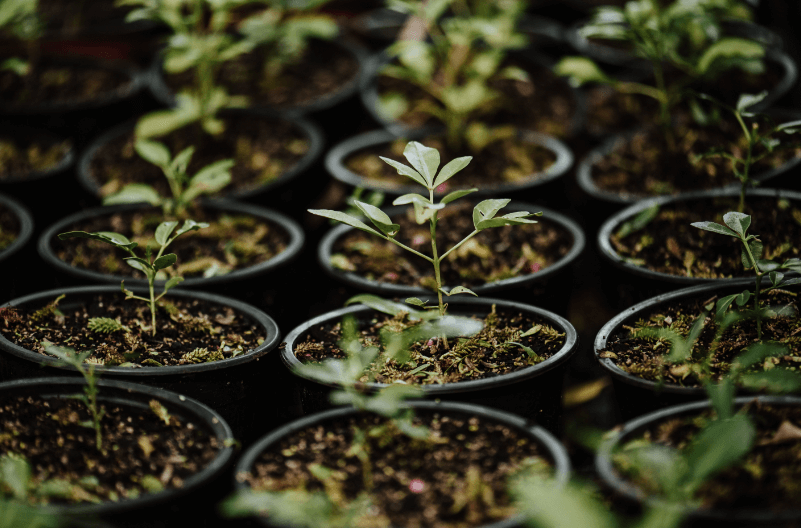
We have placed a high priority on ensuring accessibility for all, and have run numerous community events and wānanga. These engagements provide valuable opportunities to learn from esteemed Māori scholars and local experts who offer taiao insights shaped by a te ao Māori worldview. By emphasising the interconnectedness of te taiao, we acknowledge that it extends beyond the definition of the natural world or environment and, importantly, includes our connections with one another. This profound aspect of taiao distinguishes it for us, yet it is frequently disregarded in today’s society.
On a personal level, embarking on a journey of cultural connection has been a lifelong endeavour for me. My parents divorced when I was young, and I did not get the opportunity to grow up around our marae and wider whānau networks. So, working in a team of like-minded people – side by side as whānau in the māra with my hands in the soil – has given me the opportunity to learn much more than how to grow kai at scale, it has enabled me to connect with my wider whānau who share a profound connection to the land and each other.
Revitalise Te Taiao is a research programme working alongside agribusinesses and communities in three locations as they progress land-use change, work with value chains and connect with markets to revitalise te taiao. Learn more at ourlandandwater.nz/revitalise.
Glossary. Awa, river. Hapū, sub-tribe. Kai, food. Kairangahau Mātauranga Māori, Māori Knowledge Lead Researcher. Kaitiaki, guardians, stewards. Kaupapa, agenda, plan, programme. Kawakawa, pepper tree. Kūmara, sweet potato. Mahi, work. Mahinga Kai, garden, cultivation, food-gathering place. Mamae, pain, hurt, trauma. Mana whenua, Māori who occupy that land/tribal landscape. Manga, tributaries. Māra, gardens. Marae, courtyard in front of a meeting house, often used to describe the complex. Mātauranga Māori, Māori knowledge and philosophies. Ngāhere, bush. Papatūānuku, earth/earth mother. Rongoā Māori, traditional Māori medicine. Tamariki, children. Taonga, treasure. Te ao Māori, the Māori worldview. Te reo, Māori language. Te taiao, the natural environment. Tikanga, customs, lore, practices. Tūrangawaewae, place of standing and belonging. Uri, descendent, offspring. Wāhi tapu, sacred places. Wānanga, seminar, conference. Whakapapa, genealogy. Whānau, extended family, family group. Whanaungatanga, building connections and relationships. Whenua, land.
If you enjoyed this story, please share with someone else.
This story appeared in the Raumati Summer 2023/24 Edition of Shepherdess.
Get your hands on a copy.
Related Stories
Sophie Hurley
Sophie of Honest Wolf shares, in her own words, how she balances family life with farm life and running a business.
Weaving Together Four Families
On their wedding day, Amelia and Matamoana Nuku were able to honour their families – and their traditions – in a way that celebrated love.
